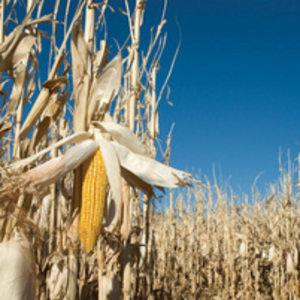WASDE report predicts lower corn yields compared to May estimates

June 12, 2013
BY Erin Krueger
The USDA has released the June 12 edition of its World Agricultural Supply and Demand Estimates (WASDE) report. The outlook for 2013/14 corn supplies is lowered 135 million bushels to 14 billion with the average yield projected at 156.5 bushels per acre, down 1.5 bushels from the May WASDE estimate.
According to the report, despite rapid planting process during mid-May, rains and cool temperatures have delayed the completion of planting in some parts of the western Corn Belt. These factors have raised the likelihood that seasonally warner temperatures and drier conditions in late July will adversely affect pollination and kernel set in a larger share of this year’s crop.
Domestic corn usage is projected 70 million bushels lower for 2013/14, while projected feed and residual disappearance is lowered by 125 million bushels due to the smaller crop, higher expected prices and increased availability of distillers grains.
Advertisement
Advertisement
The report increases its prediction for corn used in ethanol production by 50 million bushels, in line with an increase this month for the 2012/13 marking year. Food and industrial uses are also projected higher, up 5 bushels from last month.
According to the report, corn ending stocks for 2013/14 are projected 55 million bushels lower. At the projected 1.9 billion bushels, ending stocks are expected to be 2.5 times their 2012/13 level.
Advertisement
Advertisement
The season-average farm price for corn has been increased by 10 cents per bushel, to $4.40 to $5.20 per bushel.
The report states that corn import estimates have been increased by 25 million bushels, and corn exports are projected 50 million bushels lower.
A full copy of the report is available here.
Related Stories
The U.S. EPA on July 8 hosted virtual public hearing to gather input on the agency’s recently released proposed rule to set 2026 and 2027 RFS RVOs. Members of the biofuel industry were among those to offer testimony during the event.
The USDA’s Risk Management Agency is implementing multiple changes to the Camelina pilot insurance program for the 2026 and succeeding crop years. The changes will expand coverage options and provide greater flexibility for producers.
The USDA’s National Agricultural Statistics Service on June 30 released its annual Acreage report, estimating that 83.4 million acres of soybeans have been planted in the U.S. this year, down 4% when compared to 2024.
SAF Magazine and the Commercial Aviation Alternative Fuels Initiative announced the preliminary agenda for the North American SAF Conference and Expo, being held Sept. 22-24 at the Minneapolis Convention Center in Minneapolis, Minnesota.
Scientists at ORNL have developed a first-ever method of detecting ribonucleic acid, or RNA, inside plant cells using a technique that results in a visible fluorescent signal. The technology could help develop hardier bioenergy and food crops.
Upcoming Events










